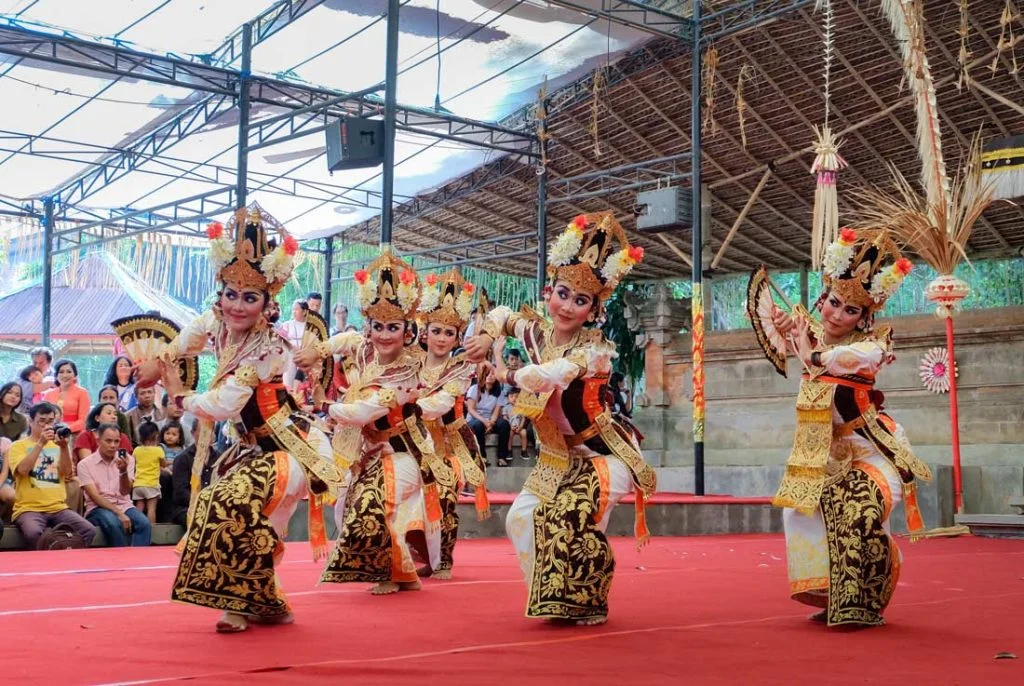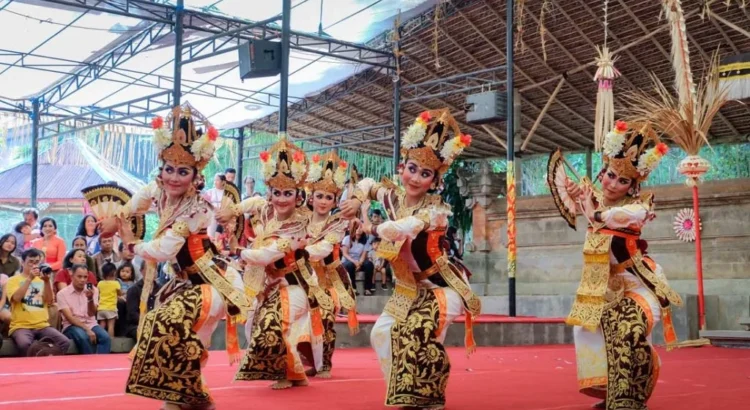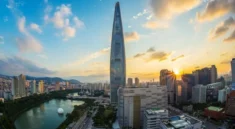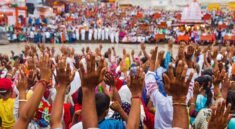
In the heart of Southeast Asia, where thousands of islands come together in one vast archipelago, lies a city that pulses with ambition, resilience, and rhythm: Jakarta, the capital of Indonesia. As the political, economic, and cultural epicenter of the nation, Jakarta represents the essence of Indonesia in microcosm—a place where centuries-old traditions harmonize with cutting-edge urban development, where the scent of street-side satay mingles with the aroma of international cuisine, and where towering skyscrapers cast shadows over colonial-era architecture and ancient mosques.
Jakarta is more than a city. It is a fusion of modernity and tradition, a complex yet captivating mosaic of people, places, and stories that reflect the broader identity of Indonesia: vibrant, diverse, and always evolving.
The Metropolis That Never Stops
Jakarta is a city of contrasts. On one side, it is one of Asia’s largest megacities, with a population exceeding 10 million, and more than 30 million in the greater metropolitan area (Jabodetabek). Its skyline is dotted with high-rise office towers, luxury apartments, international hotels, and ultra-modern shopping malls. On the other side, traditional neighborhoods, known as kampungs, flourish in its midst—tight-knit communities where neighbors share food, stories, and a way of life that has endured for generations.
Despite facing challenges like traffic congestion and flooding, Jakarta moves forward with unrelenting energy. Its streets buzz with motorbikes, commuter trains hum along newly expanded lines, and conversations in cafes and markets reflect a city that is always on the move, always reinventing itself.
Historical Roots: From Sunda Kelapa to Batavia
The story of Jakarta stretches back centuries to a small port town called Sunda Kelapa, once part of the Sunda Kingdom. This harbor, located on the Java Sea, was a thriving trade center long before the Dutch arrived in the early 17th century.
In 1619, the Dutch East India Company seized control and renamed the city Batavia, establishing it as the capital of the Dutch East Indies. The influence of colonial rule is still visible today in Kota Tua (Old Town), where 17th-century buildings, cobblestone plazas, and museums like the Fatahillah Museum preserve Jakarta’s European legacy.
Yet Jakarta’s roots go even deeper. Its indigenous Betawi culture—born of intermarriage between Javanese, Malay, Chinese, Arab, Indian, and European settlers—represents a melting pot of influences that continues to shape the city’s unique identity.
Skyline of the Future: Jakarta’s Modern Transformation
In recent decades, Jakarta has transformed dramatically. As the economic powerhouse of Indonesia, it is home to multinational headquarters, tech startups, and a burgeoning creative economy. Neighborhoods like Sudirman Central Business District (SCBD) and Mega Kuningan feature skyscrapers that rival those in Singapore and Kuala Lumpur.
The city’s commitment to infrastructure is also evident. The opening of the Jakarta MRT and the TransJakarta Bus Rapid Transit system has revolutionized public transportation, helping to ease traffic and connect people more efficiently across the city.
Retail and entertainment spaces like Grand Indonesia, Plaza Indonesia, and Pacific Place attract shoppers from all over the region. These malls aren’t just shopping centers—they’re lifestyle hubs featuring cinemas, gourmet food courts, art installations, and even mosques, showing how tradition and modern convenience can seamlessly coexist.
Cultural Identity: A City of Many Traditions
Jakarta’s heartbeat lies in its people. The city is a microcosm of Indonesia’s cultural diversity, with citizens hailing from across the archipelago—from Aceh and Sumatra to Papua and Sulawesi. This blend is evident in every facet of daily life: the languages spoken, the cuisines enjoyed, and the festivals celebrated.
Betawi Heritage
The indigenous ethnic group of Jakarta, the Betawi, represent the cultural foundation of the city. Their traditions are preserved through dance (like the Tari Topeng), music (such as Gambang Kromong), and vibrant costumes. The Ondel-Ondel, giant puppet figures often seen during parades and celebrations, are a uniquely Betawi tradition.
You can experience this rich heritage firsthand at the Setu Babakan Cultural Village, where visitors can watch traditional performances, try Betawi cuisine, and explore the history of Jakarta’s native people.
Religious Harmony
Jakarta is home to diverse religious communities, and its architectural landscape reflects this harmony. The Istiqlal Mosque, the largest mosque in Southeast Asia, stands proudly across from the Jakarta Cathedral, symbolizing Indonesia’s foundational principle of Bhinneka Tunggal Ika (Unity in Diversity). This peaceful coexistence is not just symbolic—it’s woven into the social fabric of the city.
A Culinary Wonderland: From Street Food to Fine Dining
One of Jakarta’s greatest charms is its gastronomy. In this city, you can indulge in everything from a plate of nasi goreng (fried rice) at a roadside stall to a multi-course fine dining experience with Indonesian fusion cuisine.
Street Food Scene
Jakarta’s streets come alive in the evening with food vendors selling sizzling satay, spicy gado-gado, crispy martabak, and warm bowls of soto Betawi. The aromas, flavors, and textures are as diverse as the city’s residents.
Street food isn’t just sustenance here—it’s a cultural experience, an entry point into the everyday lives of Jakartans.
Modern Dining
Jakarta is also home to a growing number of world-class restaurants offering contemporary takes on Indonesian cuisine. Establishments like Kaum, Plataran, and Namaaz Dining blend tradition with innovation, showing that heritage can be preserved and reimagined for new generations.
Festivals and Celebrations
Throughout the year, Jakarta hosts dozens of cultural festivals that highlight its diversity and creativity. The Jakarta International Java Jazz Festival, one of the biggest jazz festivals in the world, draws artists and fans globally. The Jakarta Fair (Pekan Raya Jakarta) celebrates the city’s anniversary every June with food, music, crafts, and fireworks.
Traditional celebrations such as Lebaran (Eid al-Fitr), Chinese New Year, and Christmas are embraced citywide, reflecting Jakarta’s pluralistic soul. Each holiday brings its own color, cuisine, and communal spirit.
Green Spaces and Heritage Sites
In the middle of Jakarta’s hustle and bustle are pockets of tranquility and heritage that provide a glimpse into its soul.
Monas: The National Monument
At the heart of Jakarta stands the Monumen Nasional (Monas), a towering symbol of Indonesia’s independence. Surrounded by Merdeka Square, Monas offers panoramic views of the city and houses a museum that tells the story of the country’s struggle for freedom.
Taman Mini Indonesia Indah
To understand the full scope of Indonesia’s diversity, visit Taman Mini Indonesia Indah (Beautiful Indonesia Miniature Park), which features traditional houses, cultural exhibits, and performances representing all 38 provinces.
Thousand Islands (Kepulauan Seribu)
Just an hour’s boat ride from the city are the Thousand Islands, offering pristine beaches, coral reefs, and quiet escapes from the urban sprawl—a testament to Jakarta’s unique blend of modern city life and tropical paradise.
Challenges and Resilience
Jakarta is not without its challenges. The city faces issues like flooding, traffic congestion, and urban overcrowding. Environmental concerns, including pollution and land subsidence, have also prompted national initiatives—such as the plan to relocate the capital to Nusantara in East Kalimantan.
Yet Jakarta is nothing if not resilient. Its residents, known for their warmth and humor, adapt quickly and push for progress, proving time and again that this city cannot be defined solely by its difficulties. Jakarta thrives because of its people—their entrepreneurship, creativity, and enduring spirit.
The Future of Jakarta
As Indonesia looks to the future, Jakarta remains at the center of innovation. The city is embracing smart city technologies, investing in sustainable infrastructure, and encouraging youth-led creativity in everything from fashion and design to fintech and gaming.
With its blend of past and present, Jakarta is poised to remain a beacon of Indonesia’s cultural dynamism and global ambition. Whether you’re an entrepreneur, an artist, a student, or a traveler, the city offers boundless opportunities and experiences.
Conclusion: A Living Tapestry of Time
Jakarta is not a city that can be understood in a single glance. It must be explored through its backstreets and boulevards, its markets and malls, its traditions and transformations. It is a city where mosques echo alongside jazz clubs, where rituals live on in the shadows of neon lights, and where ancient wisdom coexists with digital innovation.
In Jakarta, modernity does not erase tradition—it enriches it. And tradition, far from holding back progress, gives it meaning.
Jakarta is not just the capital of Indonesia—it is its beating heart. A fusion of everything the country was, is, and aspires to be.




